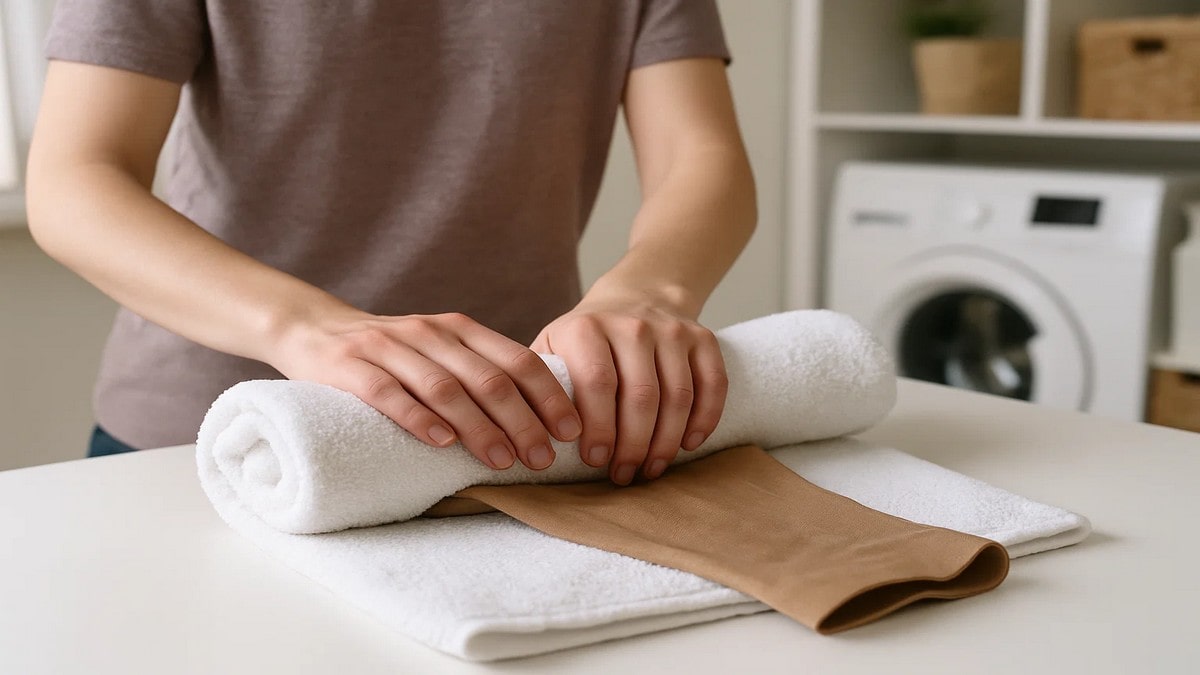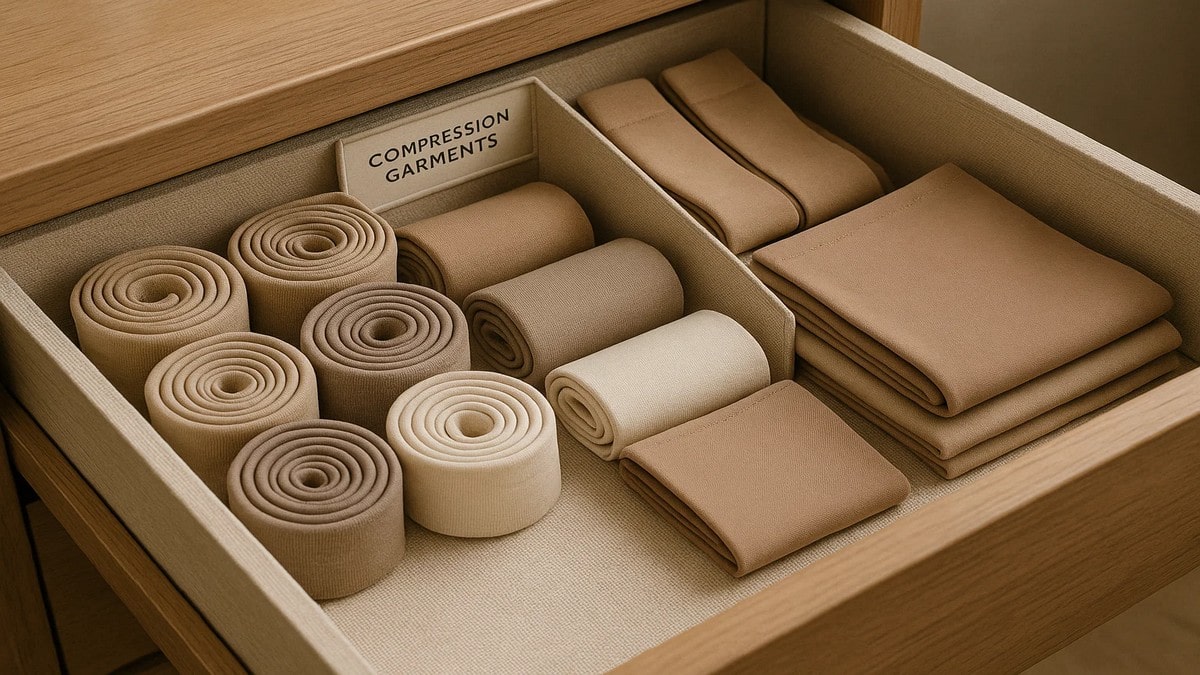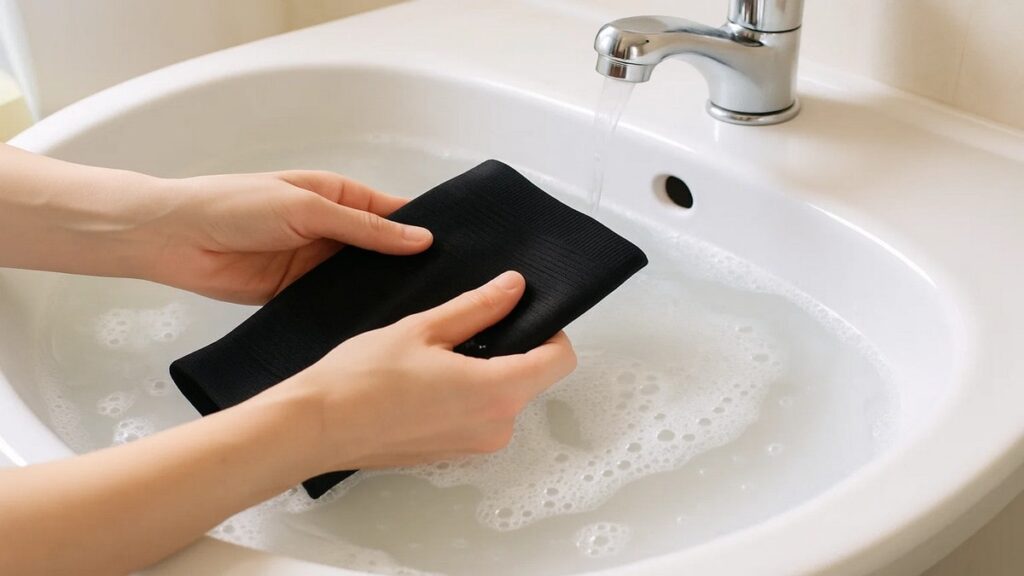Compression garments are specially engineered fabrics designed to support circulation, reduce swelling, manage lymphedema, and aid recovery. Proper care is essential to maintain their effectiveness and longevity. In this guide, we’ll cover every aspect of How to Wash Compression Garments, including preparation, gentle techniques, drying methods, frequency, and storage.
1. Why proper washing matters for compression garments
-
Preserves elasticity and compression power.
-
Removes bacteria, sweat, lotions and odor.
-
Extends the lifespan so you don’t need frequent replacement.
If you don’t wash them correctly, compression zones gradually relax and the garment loses its therapeutic function—or aesthetic fit. So learning How to Wash Compression Garments properly is critical.
2. Preparing garments for washing
-
Read the manufacturer’s care instructions: Most recommend hand‑washing in cool water.
-
Check for special features: zippers, seams, Velcro straps—close or fasten them to avoid snags.
-
Pre‑rinse if heavily soiled with sweat or lotion residue.
Using lukewarm or cool water prevents fabric breakdown. Pre‑treat stains gently if needed, using mild soap.
3. Step‑by‑step hand‑washing method
Step 1: Fill basin with cool to lukewarm water
Use a sink or tub with water around 30 °C (86 °F), never hot.
Step 2: Add mild detergent
Choose a gentle, non‑biological detergent. Avoid bleach or fabric softeners—they degrade fibers and reduce compression.
Step 3: Submerge and soak
Place the garment in water, gently press down to fully saturate it. Soak for 5–10 minutes.
Step 4: Gently agitate
Move the garment in the water using gentle motions—do not wring, twist, scrub harshly. Focus attention on areas like ankles or knees to release trapped particles.
Step 5: Rinse thoroughly
Drain the soapy water and refill with clean water. Rinse until no soap remains. You may need 2–3 rinses.
Step 6: Remove excess water without twisting
Press garment flat in a towel: lay flat, roll towel to absorb moisture, then gently squeeze—never wring.
Step 7: Dry flat, away from heat
Lay the garment flat on a dry towel or drying rack. Avoid direct sunlight, radiators or tumble drying, which can distort elastic fibers.
You’ve just learned the fundamental process for How to Wash Compression Garments by hand in the most effective way.

4. Machine washing, when and how (if permitted)
Many modern compression garments can be machine washed—but only if explicitly allowed by the manufacturer label. If so, follow these guidelines:
-
Use a mesh laundry bag to protect the garment.
-
Set the machine on delicate or gentle cycle, cold water (<30 °C).
-
Use mild detergent only.
-
Skip tumble drying: instead, reshape and lay flat to dry.
Machine washing reduces manual effort, but always check the care label before trusting this method. Be aware machine agitation can accelerate wear.
5. Frequency: How often should you wash compression garments?
-
Every day or every other day if wearing during active workouts.
-
If worn as daily medical wear (for edema or recovery), wash at least every 2–3 days.
-
For occasional wear, once per week is sufficient.
-
Never wear a compressed garment more than one full day without washing to avoid bacteria buildup and skin irritation.
Understanding proper intervals supports both hygiene and garment performance.
6. Tips to keep garments fresh and odor‑free
-
Air out the garment after each use before stowing it.
-
Use special garment freshening sprays formulated for compression—only if recommended.
-
Rotate multiple garments to allow full drying time.
-
Avoid lotions or oils directly under the garment—they break down fabric over time.
These practices reinforce the benefits of How to Wash Compression Garments and extend their usable life.
7. Common mistakes to avoid
-
Hot water or bleach: weakens elastic fibers.
-
Fabric softeners: coat the material, reducing compression.
-
Wringing or twisting: breaks fibers prematurely.
-
Tumble drying or direct heat: shrinks or distorts shape.
-
Delayed washing: letting sweat sit promotes odor and stains.
By sidestepping these mistakes, you preserve the medical or athletic function of your garments.
8. Special considerations for different garment types
-
Stockings and sleeves: low cut, more delicate—you need extra care when rinsing ankles or finger openings.
-
Full body suits or girdles: longer soak time but still gentle motions.
-
Knee braces or waist trimmers: check for detachable inserts—remove them before washing.
Regardless of style, this is still firmly in the domain of How to Wash Compression Garments, adjusted based on garment length or features.
9. How to store compression garments
-
Once fully dry, fold them flat or roll gently, avoid sharp creases.
-
Store in a cool, dry drawer, away from sunlight.
-
Keep pairs together to avoid mismatched compression levels.
Proper storage ensures compression zones remain uniform and garments remain ready for consistent use.

10. Signs your compression garments need replacement
Monitor the following:
-
Visible sagging or wrinkles when worn
-
Elastic feels loose, not snug
-
Fabric thinning or pilling
-
Persistent odor after washing
-
Loss of effectiveness in reducing swelling or supporting muscles
Most compression garments require replacement every 3–6 months depending on wear frequency. That’s why correct care and How to Wash Compression Garments is essential—it slows aging.
11. How to link care routines to lifestyle needs
This section introduces the special phrases you can link for marketing or educational purposes:
-
People using Compression Garments During Workouts benefit most from daily washing and rotating sets to maintain compression during exercise recovery.
-
Individuals concerned about cosmetic or post‑liposuction use often ask about Compression Garments After Fat removal procedures. They must wash them softly and frequently to remove oils and promote hygiene.
-
Clients using Daily Shapewear After Gastric Bypass benefit from the same washing guidelines to maintain support, hygiene, and comfort when wearing underwear‑style compression all day.
-
Finally, when Comparing compression garments vs. shapewear, remember: compression garments are medical‑grade with graded pressure and must be washed carefully, whereas shapewear may tolerate more robust laundering but lacks therapeutic elasticity.
12. Sample care checklist
| Task | Details |
|---|---|
| Pre‑wash inspection | Fasten zippers/straps; check for damage |
| Washing method | Hand wash in cool water with mild detergent |
| Agitation | Gentle pressing—no wringing |
| Rinse | Repeat until water is clear |
| Dry | Press water out via towel; air dry flat |
| Frequency | After each use (for workouts or medical wear) |
| Storage | Cool, dry place; pair garments together |
| Replacement | Every 3–6 months or when compression diminishes |
Final thoughts
When cared for correctly, compression garments remain effective, hygienic, and comfortable for longer. By following this complete guide on How to Wash Compression Garments, you ensure they retain their medical or performance benefits while staying fresh and odor‑free.







